Modern life is a little like living inside a very low-power microwave oven.
We are constantly exposed to electromagnetic (EMF) radiation from our phones, laptops, televisions, Internet routers, and all the similar devices our nearby neighbors use. We are bombarded with EMF radiation from power lines, cell towers (check issues of living near a cell tower), television towers, and 4G and 5G repeaters.
Fact: Maximum TVs (LED and OLED included) give off radiations even in turned off mode! We have covered a exclusive separate article on it.
There are locations that are worse than others. If you live so close to high-tension power lines that you can hold a light bulb in your hand and it glows, you are definitely too close for comfort — or safety. An EMF meter can help you determine if you are being exposed to so much EMF radiation that immediate protective action is necessary.
Fortunately, emergent health issues from ambient electromagnetic radiation are rare. The kind of radiation put out by our electronic devices isn’t like, say, the kind of radiation put out by an out-of-control nuclear reactor.
The great news is there are plants that can absorb radiation from their environment. Even better, many are safe indoor plants. And to top it all off, keeping an indoor plant (or outdoor plant) that can absorb radiation is a very inexpensive solution.
So let’s explore some of these amazing plants with antiradiation properties in this article.
What are the dangers of electromagnetic radiation for our health?
The radiofrequency radiation emitted by electronics is non-ionizing, that is, it does not change the chemical structure of the molecules it touches. It doesn’t, or at least doesn’t directly, change the structure of DNA.
It does not cause genetic mutations. Your pet turtle won’t grow wings and your baby won’t develop superpowers.
There are, however, subtle, serious, and long-term health effects of electromagnetic radiation exposure for every member of your household, both human and animal.
“You” don’t resonate with any of the wavelengths of radiation put out by electronics and the devices that send them signals, but the calcium ions in your cells do.
What’s the Mechanism?
Tiny amounts of ambient energy can make calcium go into cells when it’s supposed to go out and move out of cells when it’s supposed to go in. This doesn’t stop calcium from powering your muscles, but the timing might be a few thousandths of a second off.
This doesn’t force your endocrine organs to release hormones that they weren’t going to release anyway (calcium triggers the release of hormones, for example, insulin, from the organs that make them) but it may put them into circulation too soon. It’s like something constantly is pushing your accelerator but you can’t quite figure out what.
Impact of Heat
Electromagnetic radiation otherwise gets converted into heat. As we have mentioned before, Wifi radiofrequency radiation may increase your body temperature 0.1 to 2.0 ° C (about 0.2 to 3.6 ° F) if you are close enough to your router. When your cells are heated, their enzymes work faster. That’s a major problem for dividing cells.
Enzymes don’t do their job at the right time, so cells are created with defective DNA. And when there are DNA errors, the cell may be dysfunctional, it may be removed by the immune system along with some surrounding healthy cells, or it may become cancerous.
But how much heat depends is generated in your body on the amount of electromagnetic radiation to which you exposed.
And houseplants have properties that can be very helpful in absorbing radiation and reducing your electromagnetic exposure by taking on that burden themselves. The good news is, EMF radiation does a lot less harm to a plant than it does to you.
Let’s take a look at how that works with a completely non-scientific but true story.
What Happens When Plants Absorb Radiation
My grandmother lived on a farm. She loved her flowers. She also loved her grandchildren. And her grandchildren loved their pet goats, all 40 of them.
Unfortunately, at ages five and eight, her grandchildren did not always remember to close the gate to their paddock. One day, the goats discovered the flower beds and in a few minutes not even a stub remained. Grandma was not going to let that happen again.
She replanted her summer flower beds in zinnias. Then she erected a double-strand electric fence around them and plugged it in.
The seeds sprouted, the zinnias grew tall, and in just six weeks, the beds were filled with flowers again. Sure enough, the kids forgot to close the gate one day and D’Artagnian, the goat the other goats depended on for testing things, ventured over to nibble on some fresh zinnia blossoms. The other thirty-nine goats were lined up in a row to observe the outcome of the experiment.
D’Artagnian only had to brush against the fence for a fraction of a second before all 40 goats realized the flower bed was off limits. They returned to their pen to await their next feeding.
Where the EMFs Come in
The zinnias, however, also found the electric fence uninviting. Even though they were safely six inches behind the fence. Grandma had also made sure the power to the fence went through a step-down transformer so no pets or people would get an injurious shock.
Even with these precautions, the plants started growing in an S shape to avoid the fence.
When a rainstorm washed the plants closer to the fence, leaves that got too close were dehydrated and shriveled up, even without touching the live wire. Plants that were further away from the fence continued to grow and bloom.
Grandma’s zinnias had absorbed EMFs and dehydrated even though they had been soaked in a rainstorm. And the zinnias at the edges of the bed had protected the zinnias behind them.
How does that work? For the answer, we can leave anecdote and turn to experimental science.
How Plants Absorb EMFs
It turns out that scientists have had a long interest in how plants react to electromagnetic (and other forms of) radiation.
Research teams working for the space agencies of both the United States and Russia have wanted to know if it would be possible to grow food in space, and, if it is, how much radiation shielding will be required.
They have looked at the effects of both ionizing radiation, the kind of radiation that directly alters molecules such as DNA, and non-ionizing radiation, the kind of radiation put out by your electronic devices and Internet connections, which becomes heat.
What the researchers have discovered is that as EMF radiation turns into heat inside plants, most of the energy is spent breaking hydrogen bonds between water molecules. The negative O in one H2O molecule is attracted to the positively charged H in adjacent H2O molecules, and vice versa. This leaves the water more “watery,” freer to move around.
Breaking hydrogen bonds gives a gentle push to other contents inside a cell. Maybe a nutrient molecule is a fraction of a micron closer or farther away from its destination. Maybe a regulating hormone gets nudged away or nudged closer to a cell that needs it.
The perturbations caused by EMF radiation may cancel each other out, or, as in the case of Rosemary’s zinnias, kill some leaves and flowers.
But the the electromagnetic radiation that is absorbed by plants isn’t absorbed by anything else. The more stability there is in the structure of a plant’s water, the better it buffers everything around it from EMF.
Plant Stability
It isn’t just about how “watery” a plant is. It’s more about how stable the water is in a plant, how many bonds there are that can absorb electromagnetic radiation.
Fortunately, absorbing electromagnetic radiation usually does very little damage to the plant while offering a great deal of protection for people. Plants can prevent health effects of EMF.
Certain other plants can treat the effects of ionizing radiation through an entirely different process. Ionizing radiation causes massive damage inside cells, but sometimes cells can repair themselves if they can just “turn off” the toxic processes.
These plants contain compounds that the body can use to make more of a “quenching” enzyme called glutathione peroxidase. They don’t directly repair radiation damage. They give the body the raw materials it needs to do its own repair work.
Of course, it’s better if the body has these raw materials before radiation exposure. But wouldn’t it be a good thing to have the herb sources of these raw materials on hand when you need them most?
The effects of the kinds of radiation that directly attack the structure of DNA are much more dramatic, and having a potted plant sitting in the corner isn’t going to be very helpful against gamma rays or charged particle beams. Plants that are beneficial against ionizing radiation need to be in you, not around you; they must be consumed. But it’s a great idea to have these on hand for natural first aid should the need ever arise.
So what are some of the plants in your radioprotective garden?
Aloe vera
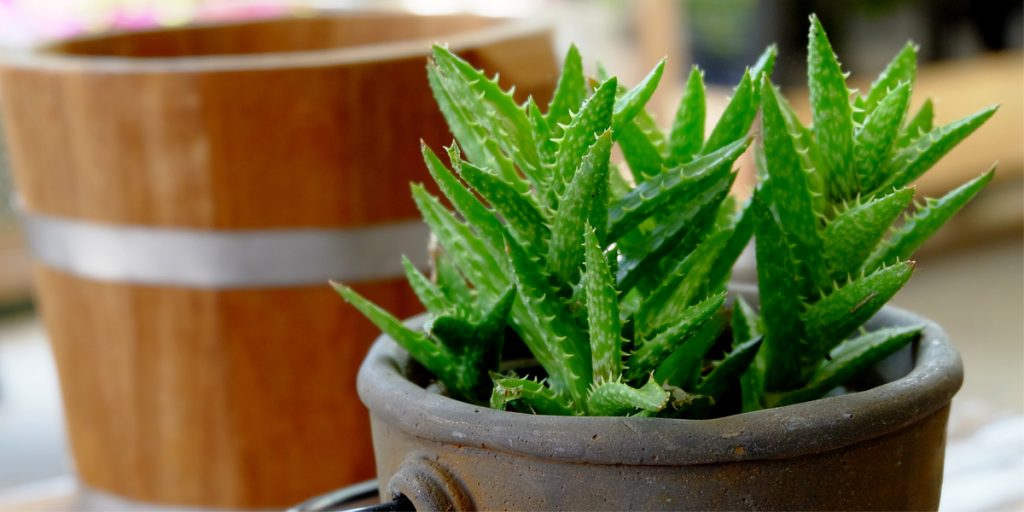
Aloe vera is famous for its sap, and sap is rich in water. The water content of aloe vera makes the plant protective against radiofrequency radiation (EMF) for everyone in your home.
Every home should have at least potted aloe vera plant, or, better, several. Aloe vera is useful as a burn remedy. And its sap can be applied to directly to the skin affected by mild (first- or second-degree) thermal burns.
Aloe vera requires both regular watering good drainage. Its growing medium needs to be moist but not so watery that air cannot flow between the roots. Do not allow the plant to freeze. Beware that excessive dosage of this plant internally can cause stomach upset; in many countries its primary use is as a laxative. Using the plant on your skin will not affect your digestive tract.
Asparagus fern

Asparagus fern (which is really a kind of grass) protects against non-ionizing radiation with its dense matte of roots and its fine fronds. This plant constantly packs water in its root. The molecules of water generate hydrogen bonds that can be broken by electromagnetic radiation that dissipates as heat. Placing the plants so roots are ia router level add radiation protection .
The asparagus fern is not a plant you would ever take internally. You will want to grow the Meyeri cultivar, wh has more erect stems to 70 cm (28 in) and denser foliage.
Betel leaf
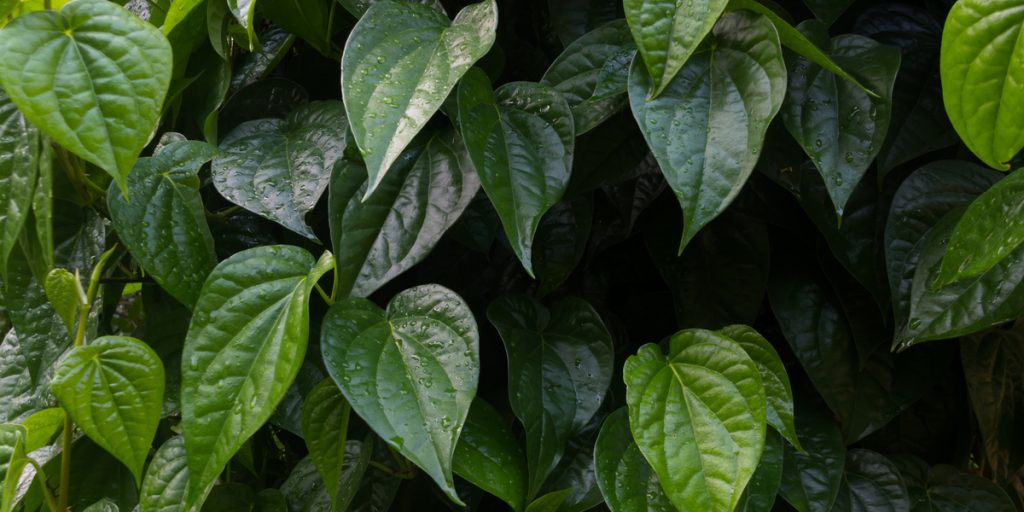
As an ornamental, betel leaf can be grown as a wall of protection against EMF generated by home electronics. Taken internally, as it is in much of Southeast Asia, the plant can cause far more genetic damage than EMF itself.
Make sure your betel leaf plants are trained so they grow upright. Place multiple betel leaf plants between sleeping areas, pet crating spaces, and cribs and your router or electronics. Just don’t take up chewing betel!
Cactus
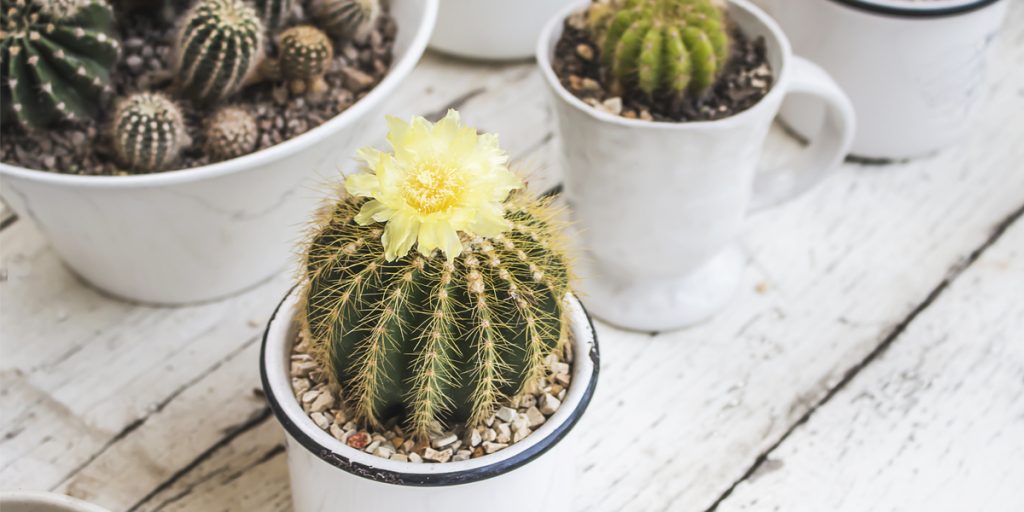
Every cactus has phenomenal ability to store water. These desert plants have to be able to make the most of rain that may fall only once every few years to survive undending days of drought. Up to 90 percent of the mass of a cactus may be water. And many cacti are well-adapted to heat so they will suffer no stress as EMF is converted to heat in their stems.
Cacti tend to have thorns. Don’t place cacti where they can injure pets or children. Be sure to give them needed sun.
Fiddle leaf

Fiddle leaf, also known as ficus, is a tropical plant adapted as a houseplant. Like many plants of tropical origin, it stores enormous amounts of water.
Fiddle leafs don’t need direct sunlight, but they cannot withstand temperatures below 50 degrees Fahrenheit (about 10 degrees Celsius). Place them strategically to block EMF flowing from electronics in your home. It’s possible to make an antioxidant radiprotective herbal extract from this species of fig, but if you are allergic to latex, you may have a severe reaction to this fig in a tea.
Ivy plant

Ivies are climbers. To keep on growing up the surfaces to which they are trained, they need to be able both to “pump” water through their stems and to store it in their waxy leaves. Both qualities help them protective people and pets against EMF.
Ivy leaves contain soap-like chemicals called saponins. They are extremely bitter. There are herbal remedies made from ivy (they don’t help with radiation exposure) but their bitter taste can trigger unpleasant release of stomach acid.
Mustard Greens
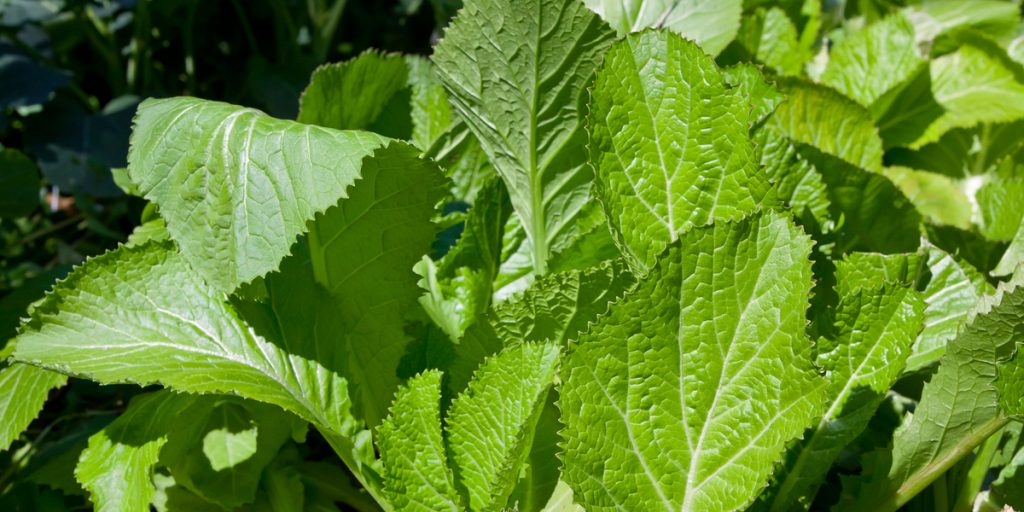
Mustard greens are a leafy green in the cabbage family popular around the world. Example of mustard greens include gai choy, Korean red mustard, Japanese giant red-leaf mustard (which may look more purple to some observers), ,mizuna, straight-leaf mustard, and curly-leaf mustard. All of these varieties of mustard are full of antioxidants that help the body make the glutathione it needs to fight the effects of ionizing radiation. They are not really a buffer against EMF. But they are an excellent source of the nutrients your body needs to fight other kinds of radiation.
Rubber plant

Even if you have a black thumb, you may find that you can still have success with a rubber plant. Tolerant of neglect as long as it gets bright sunlight (without severe overheating), the rubber plant still appreciates generous watering on a regular basis. And the complex chemistry of rubber creates numerous hydrogen bonds that can absorb EMF radiation.
Don’t eat rubber plants. They would be incredibly chewy, and you cannot digest them.
Snake plant

Snake plants are great for generating oxygen indoors. Their long, spiky leaves make them useful in home decoration. And they are great for soaking up EMF radiation from your computer, router, and printers, both paper and 3-D.
Don’t place snake plants in direct sunlight. And remember: Snake plants are meant to be seen and not eaten.
Spider plant
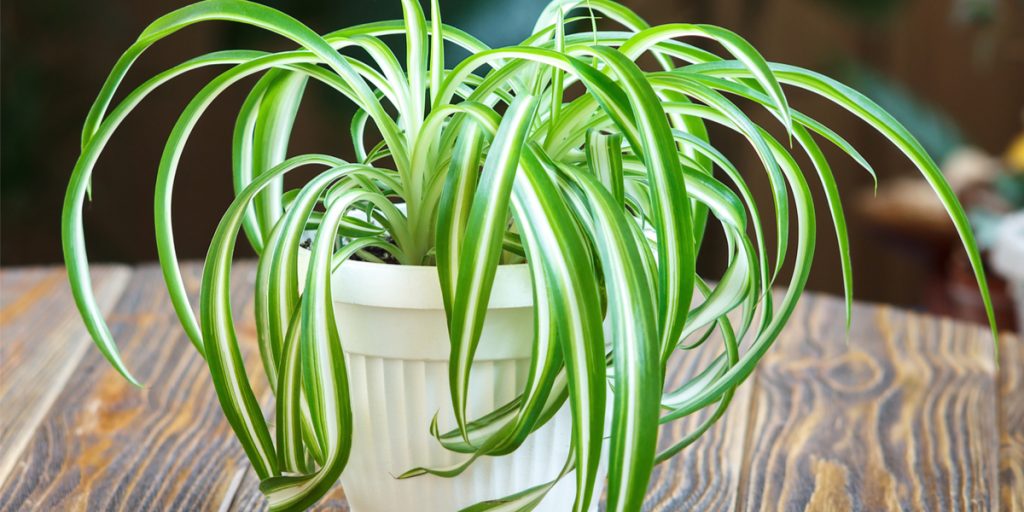
Chlorophytum comosum, better known as spider plant, but also known as hen and chickens, ribbon plant, airplane plant, and St. Bernard’s lily, is perennial flowering plant native to South Africa. It’s easy to grow as a houseplant. It’s also one of the best houseplants for reducing indoor air pollution from household chemicals, plastics, and treated fabrics.
It’s hard to kill a spider plant, but they must not be allowed to freeze, and it’s better not give them fluoridated water. They are also sensitive to cockroach baits; the boron they contain can kill the plant. Everything about a spider plant is EMF-protective, especially when it generates its enormous blooms. Placing this plant in a hanging basket maximizes its radiation-blocking potential.
Split Leaf Plant

The split leaf plant is also known as the Swiss cheese plant and the split leaf philodendron, even though it is not really a philodendron. This plant grows heart-shaped leaves that split as they mature. The massive leaves offer a useful buffer against EMF. Split leaf plants are poisonous, so don’t let your children and especially your kittens and puppies have access to them.
Stone Lotus (Lotus flower)

Can’t risk exposing your children or pets to spikes and needles of full-sized cactus? Use a stone lotus (Lithops pseudotruncatella) in a beautful ceramic container as desk protection against radiation. Place this ornamental plant next to your computer on your desk for added radiation protection.
Your stone lotus won’t need a lot of maintenance. After all, most of the time, this living plant can be mistaken for a stone. You don’t need to leave the light on for it when you aren’t at your desk. But be sure to be present to enjoy its rare blooms in late summer and early autumn.
Conclusion
The modern devices on which our communications and many of our jobs depend all generate radiation. Radiation has serious health effects. But 11 houseplants and one spicy vegetable protect us from their permanent effects.


